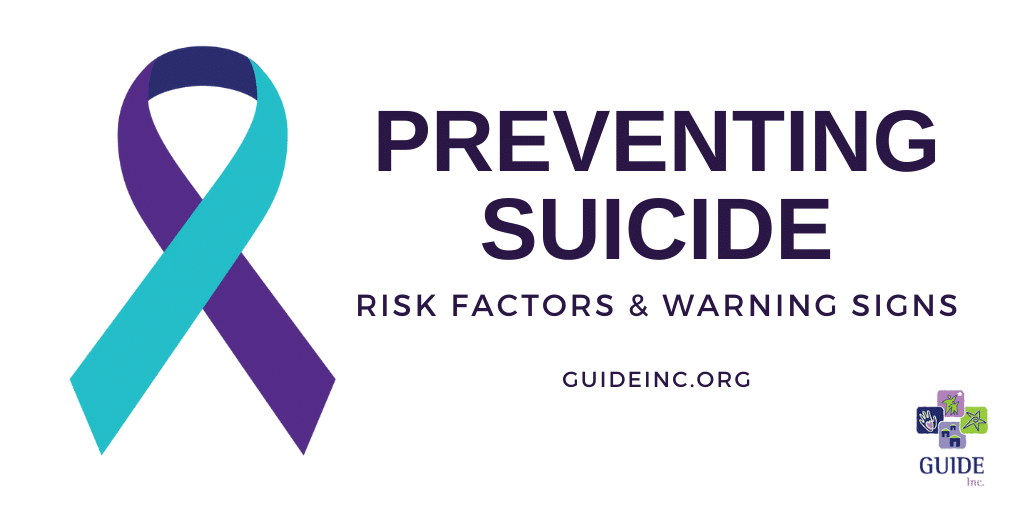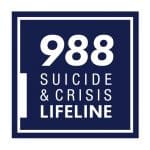We can all help prevent suicide. Learning the risk factors and warning signs of a potential suicide attempt can save lives.

Risk Factors
These characteristics increase the likelihood of suicide but aren’t necessarily direct causes. (CDC, AFSP)
- Previous suicide attempt
- Family history of suicide
- History of trauma or abuse
- Mental illness
- Social isolation
- Impulsive or aggressive tendencies
- Stressful life events
- Serious physical illness
- Substance use disorder
- Access to lethal means
Warning Signs
Most people who take their lives exhibit one or more changes in talk, mood and/or behavior. (AFSP, Suicide Prevention Lifeline)
- Talking about wanting to die or to kill themselves
- Talking about feeling hopeless or having no reason to live
- Talking about feeling trapped or in unbearable pain
- Talking about being a burden to others
- Increasing the use of alcohol or drugs
- Acting anxious or agitated; behaving recklessly
- Sleeping too little or too much
- Withdrawing or isolating themselves
- Extreme mood swings
- Increase in depression or anxiety
- Looking for a way to end their lives, such as searching online for methods

What You Can Do
If you need help for yourself or someone else, the 988 Suicide & Crisis Lifeline provides 24/7, free and confidential support for people in distress, prevention and crisis resources for you or your loved ones, and best practices for professionals by calling or texting 988 or chatting at 988Lifeline.org.
